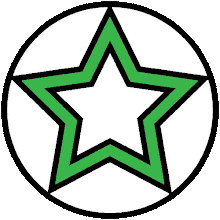Here are some of the facts of the case. 2 Live Crew's song "Pretty Woman" was said to have infringed upon the rights of Roy Orbison's recording, "Oh Pretty Woman". Roy Orbison's original song was recorded in 1964 while 2 Live Crew's version was made decades later in 1990. The 2 Live Version samples the same bass line riff used in Roy Orbison's "Oh Pretty Woman". The titles are very similar as well as the lyrical content. 2 Live Crew claims that the song is a parody of the original. Acuff- Rose Music Incorporated is suing becuase they didn't recieve a request for permission of a parody for profits. They also claim that this is allowed due to the Fair Use Doctrine which enables them to use parts of the copyrighted song without permission. In order for a copy of a song to be Fair Use it must meet these specific requirements as according to the United States Copyright Law. The specific requirements in the determing factor can be found here:
"In determining whether the use made of a work in any particular case is a fair use the factors to be considered shall include —
(1) the purpose and character of the use, including whether such use is of a commercial nature or is for nonprofit educational purposes; "
The first factor asks if the intended work was for a commercial nature such as sales and profits or for nonprofit purposes such as educational or recreational uses.
"(2) the nature of the copyrighted work;"
This next factor clarifies to see what the intended purpose of the work was.
"(3) the amount and substantiality of the portion used in relation to the copyrighted work as a whole; and"
This factor checks to see how much of the original work was actually taken to create the second piece of work. How much was used compared to the original.
(4) the effect of the use upon the potential market for or value of the copyrighted work.
The fact that a work is unpublished shall not itself bar a finding of fair use if such finding is made upon consideration of all the above factors. " (Source)
This last part checks how the piece of work effects the market. It compares to see if the secondary work is effecting the sales of the original piece.
The other concern is if it really qualifies as a parody. Acuff-Rose believed that 2 Live Crew stole the heart of the music; that they diminished the integrity of the original artwork. They also fear that the parody could potentially ruin their profits and destroy their work. The purpose of this case is to check if Acuff Rose has been infringed upon. To determine this the judges will have to observe the two songs and decipher whether an infringement has taken place or not.
"The more transformative the new work, the less will be the significance of other factors, like commercialism, that may weigh against a finding of fair use. The heart of any parodist's claim to quote from existing material is the use of some elements of a prior author's composition to create a new one that, at least in part, comments on that author's work." In order for there to have been any kind of newer work called a parody, an artist had to have copied an idea from another artist's original work. "But that tells courts little about where to draw the line. Thus, like other uses, parody has to work its way through the relevant factors. Pp. 8-12." This may be true in stating that an artist copied one another but it need to be reviewed by the courts to determine if it is legal.(Source)

No comments:
Post a Comment